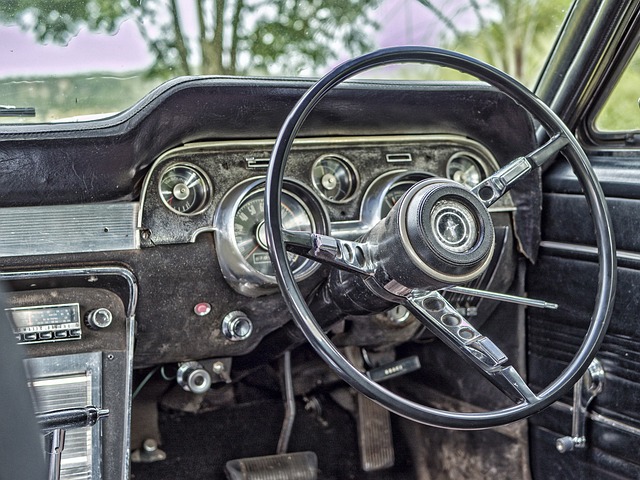Looking to register your car in California? This comprehensive guide breaks down the process step-by-step. From understanding the essential requirements to gathering all necessary documents, you’ll learn everything needed for a smooth registration experience. A key part is performing a Vehicle Identification Number (VIN) verification, which ensures your vehicle’s authenticity. We also cover completing the process at a DMV office and provide additional tips along with frequently asked questions, including the importance of timely registration and potential penalties for delays.
- Understand the Requirements for Car Registration in California
- Gather Necessary Documents for Vehicle Registration
- Perform VIN Verification: Steps and Importance
- Complete the Registration Process at a DMV Office
- Additional Considerations and Frequently Asked Questions
Understand the Requirements for Car Registration in California

Before registering your car in California, it’s essential to understand what’s required. The state mandates several crucial steps for vehicle registration, including verifying the Vehicle Identification Number (VIN). This process involves a thorough inspection of your car’s details, history, and compliance with California’s regulations. A mobile VIN verifier or inspector can play a significant role in this by providing on-site VIN verification services, ensuring your vehicle meets all necessary criteria before you proceed with registration.
Additionally, the state requires proof of insurance, up-to-date license plates, and emissions testing (in some cases). It’s also important to have the appropriate documentation, such as a valid driver’s license and proof of ownership. A mobile VIN inspection service can facilitate this by offering convenient, quick, and accurate verification of your vehicle’s identity through its unique VIN number, streamlining the registration process and saving you time.
Gather Necessary Documents for Vehicle Registration

Before you begin the registration process, make sure to gather all the essential documents required by the California Department of Motor Vehicles (DMV). This includes the vehicle’s title, which is crucial for proving ownership, and a valid driver’s license or identification card. Additionally, you’ll need proof of insurance, as well as the completed and signed Vehicle Registration Application form.
A key step in the preparation process involves conducting a VIN verification. You can do this using a mobile vin verifier or through a vin inspection to ensure the vehicle’s identity and history are clear. This is an important step that helps avoid any potential issues during registration, especially if there are any outstanding loans or legal problems associated with the vehicle.
Perform VIN Verification: Steps and Importance

Performing a VIN (Vehicle Identification Number) verification is a crucial step in registering your car in California. This process ensures that the vehicle you’re about to register is genuine, has no outstanding issues, and meets safety standards. Here’s how to do it:
1. Obtain Your VIN: You can find this unique identifier on the vehicle’s registration papers or by checking the driver’s side door jamb. It consists of 17 characters, including letters and numbers.
2. Use a Mobile VIN Verification Service: For convenience, many people opt for mobile VIN inspection services that allow you to verify your car’s history remotely. These services check the VIN against national databases to uncover any reported accidents, outstanding recalls, or theft reports. Alternatively, you can visit a local DMV office and request a manual VIN inspection. Either way, this step is essential before proceeding with registration to avoid any legal complications.
Complete the Registration Process at a DMV Office

To complete the registration process for your car in California, you’ll need to visit a DMV (Department of Motor Vehicles) office. This is where you’ll officially register your vehicle and obtain necessary documents. Before heading in, ensure that all required paperwork is ready, including proof of insurance, owner’s identification, and any relevant sales documentation if you’re transferring ownership.
At the DMV, you’ll need to undergo a vin verification process, which involves checking the vehicle’s unique identifier (VIN) against their records. This step ensures the car’s history is clear and helps prevent fraud. A mobile vin verifier or vin inspection service can also be utilized for convenience, allowing you to complete this part of the process remotely. Once your VIN is verified, the DMV will process your registration, providing you with a new set of plates and necessary permits.
Additional Considerations and Frequently Asked Questions

When registering your car in California, there are a few additional considerations to keep in mind. One important step is ensuring your vehicle’s VIN (Vehicle Identification Number) is accurately verified. This process, often done through a mobile vin verifier or vin inspection, confirms the authenticity of the vehicle and its history, which is crucial for compliance with state regulations. It also helps protect you from potential fraud or hidden issues.
Frequently Asked Questions (FAQs) regarding car registration in California often revolve around the VIN verification process. For instance, many wonder if they can complete this step themselves or if they need professional assistance. In most cases, a mobile vin verifier can provide convenient and reliable on-site services, making it easier than ever to ensure your vehicle’s readiness for registration.
Registering a car in California involves understanding specific requirements, gathering essential documents, and completing a straightforward process. After performing a crucial VIN verification step to ensure vehicle authenticity, you can easily finish registration at a local DMV office. Remember to consider any additional documentation or frequently asked questions outlined in this guide for a smooth car registration experience.
